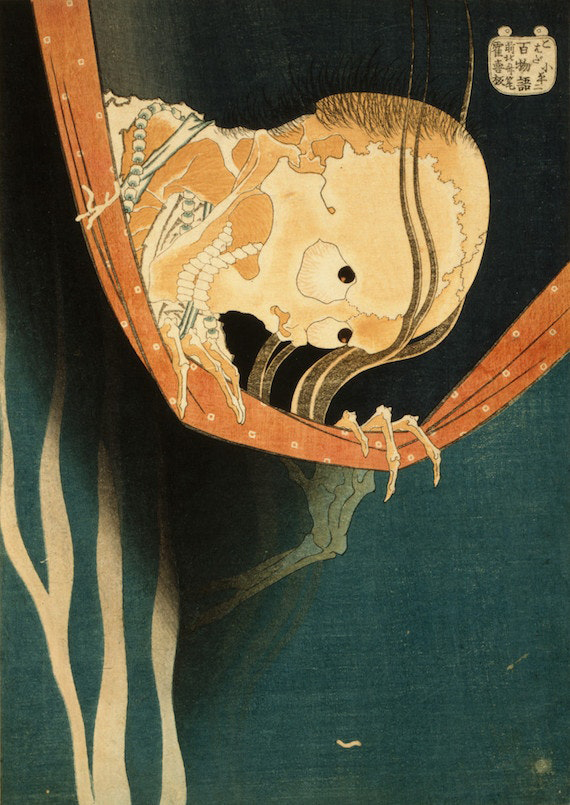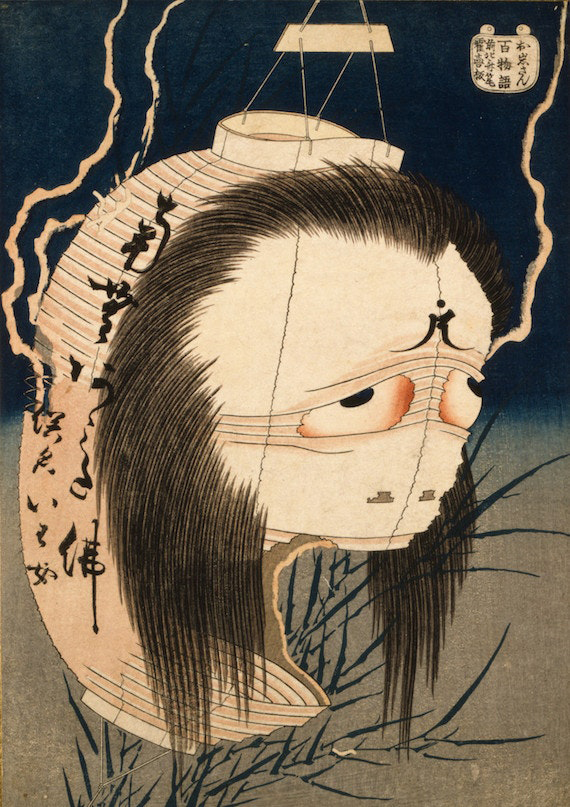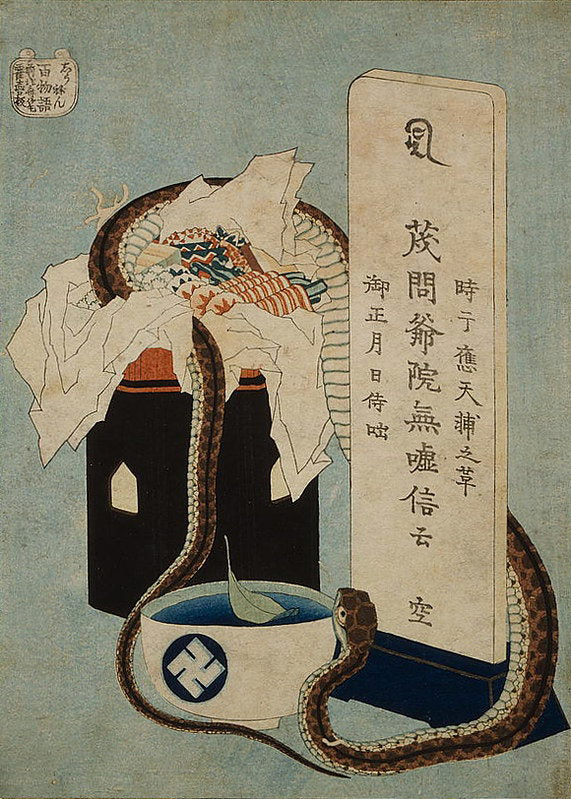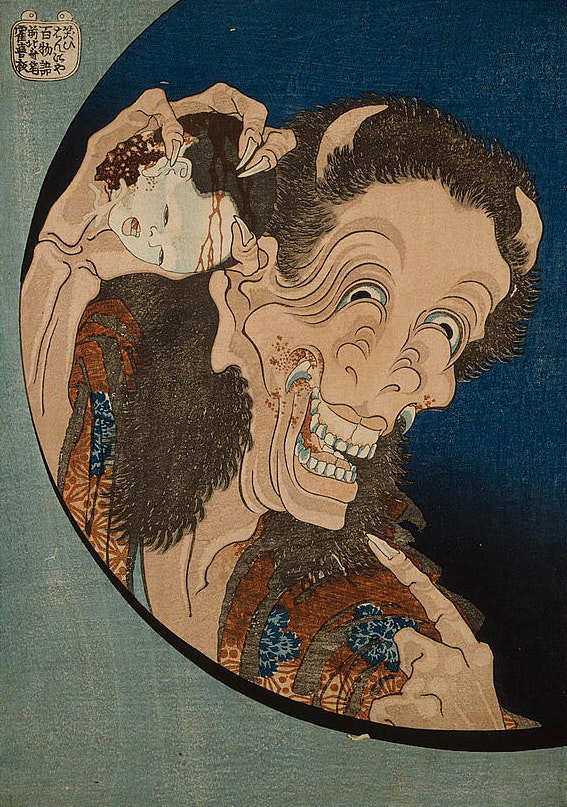Hokusai’s Kingdom of Ghosts
Inspired by frightening legends, the artist represented yokai, sly spirits in Japanese folklore, in a series of engravings.

© Public Domain
In his series of woodblock prints Hyaku Monogatari, One Hundred Ghost Stories, begun in 1830, Katsushika Hokusai summons vengeful and cannabalistic monsters and ghosts instead of his traditional Japanese landscapes. This series of engravings takes inspiration from a Japanese tradition, Hyakumonogatari Kaidankai, a moment shared between friends, surrounded by dozens of candles, where each one shares a scary story with the rest of the group before blowing out one of the candles. Legend has it that once the final candle is blown out, a spirit appears.
Revenge of the spirits
These illustrations feature characters well known to fans of yokai, sly spirits that come to haunt the living. Central characters in Japanese tales and legends, they take multiple forms: menacing animals, monsters, or objects that come to life when night falls.
Katsushika Hokusai depicts Oiwa, for example, who appears in one of Japan’s most famous ghost stories. This woman, killed by her husband, who wanted to marry a younger, more attractive woman, is reincarnated on her former husband’s wedding night as a paper lantern that comes to haunt the young couple. Another example is the real-life historical figure of Kohada Koheiji, shown by the master printmaker as being raised from the dead to torment his wife and her new lover.
Known for his iconic series Thirty-Six Views of Mount Fuji, Katsushika Hokusai also created numerous shunga works, part of an erotic art movement that was prolific during the Edo period (1600-1868). Yokai, meanwhile, continue to stimulate artistic creation in Japan, and animation studio Studio Ghibli featured them in the film Pompoko.
One Hundred Ghost Stories, Hyaku Monogatari (1831-32), is a series of prints by Katsushika Hokusai.

© Public Domain

© Public Domain

© Public Domain

© Public Domain
TRENDING
-
A House from the Taisho Era Reveals Its Secrets
While visiting an abandoned building, Hamish Campbell discovered photographs the owner had taken of the place in the 1920s.

-
The Taboo-Breaking Erotica of Toshio Saeki
The master of the 1970s Japanese avant-garde reimagined his most iconic artworks for a limited box set with silkscreen artist Fumie Taniyama.

-
With Meisa Fujishiro, Tokyo's Nudes Stand Tall
In the series 'Sketches of Tokyo', the photographer revisits the genre by bringing it face to face with the capital's architecture.

-
Masahisa Fukase's Family Portraits
In his series ‘Family’, the photographer compiles surprising photos in which he questions death, the inescapable.

-
Hajime Sorayama's Futuristic Eroticism
The illustrator is the pioneer for a form of hyperrealism that combines sensuality and technology and depicts sexualised robots.





